Melina Grin / Cats.com
Do you spoil your cat with endless toys and beds only to discover that your cat likes the box the item arrived in more than the item itself? If so, you’re not alone. Almost all cat owners are familiar with the catchphrase, “If it fits, I sits.” And you have probably noticed, (and wondered why) cats really like boxes.
Cats have a knack for resting or sleeping in unexpected places and squeezing themselves into tight places like bags, containers, sinks, laundry baskets, and of course, boxes. There’s just something about the confined and comfy space that they find irresistible. Although we might not have all the answers regarding why cats like to pack themselves into tiny spaces and small boxes, a few interesting theories explore this quirky feline phenomenon.
For a cat, a cardboard box is the perfect place to lounge, get warm, play, hide, and so on. There are a number of reasons that boxes seem to provide cats with harmless enjoyment. Cardboard boxes are an inexpensive, easy way to provide your cat with a cozy place to sleep or a fun hiding spot.Key Takeaways
Why Do Cats Like Cardboard Boxes So Much?
Though cats like boxes for several reasons, safety and security are the main motives. Cats are both prey and predator, and boxes enable them to hunt, hide, and feel safe in an enclosed space.
Let’s explore the top eight reasons cats like to snuggle in cardboard boxes:
1. Boxes Offer Hiding Opportunities and Safety
Being able to hide is crucial for cats. Even the foremost confident or outgoing feline needs a place in its home to retreat and conceal occasionally. Boxes help kitties feel safe, allow them to assess their surroundings from a secure area, provide them with a sense of control over what happens to them, and improve their feelings of confidence.
Moreover, cats aren’t good at conflict resolution, particularly with their own species, so a cardboard box offers a secure space to retreat to in response to threatening behavior from other cats.
2. Cardboard Is a Terrific Insulator
As it turns out, cats aren’t only clever, but they know how to choose the correct product to keep up their body heat. The thermal property of corrugated cardboard makes it a good insulator since it traps heat. The enclosed space of a cardboard box offers warmth, tranquillity, and solace from the outside world.
3. Wonderful Cozy Sleeping Spots
Serafina sunbaking inside a cardboard box. Melina Grin / Cats.com
Cardboard boxes are a favorite sleeping place for many felines since they provide warmth, protection, and comforting pressure. Boxes are a great place for uninterrupted sleep. A recent survey found that elderly cats’ top sleeping preferences are warm sunny spots, by the radiator, next to the fireplace, or on their owner’s bed. Although carton parcels came last on the list, experts recommend providing elderly cats with larger boxes with shallow entrances for easy access to account for the geriatric cat’s lack of body flexibility.
4. Fantastic Play Spaces
Regardless of the box shape or size, cats are inquisitive creatures who like to play and explore novelty items. Cardboard has a distinctive texture that’s ideal for endless fun and scratching is one of the reasons why why do cats love to sit in boxes as much as they do.
Most notably, it’s fun for cats to play through cut-out entry/exit holes in boxes. Boxes can also be turned upside down to provide variety. This is great for cats since they are attack predators who prefer to obscure themselves before pouncing on toys, other cats, and humans when they least expect it.
5. Stress Relievers
According to a 2014 study, cats that are supplied with hiding boxes in their new environment were less stressed and adapted to the new surroundings faster than those without a concealing box. This demonstrates the remarkable benefit of the humble cardboard box.
Moreover, “hide and perch” boxes are particularly gratifying in shelters and vet clinics; a cardboard box placed on its side allows easy accessibility while the perching spot on the top of a box enables cats to get off the ground, feel more secure, and experience less stress.
6. Sensory Enrichment
Sensory stimulation is extremely valuable and enjoyable for cats. Cats exposed to novel scents are much more exploratory and playful. Homemade sensory boxes filled with objects foraged from outdoors like dried leaves, twigs, feathers, catnip, silvervine, scrunched-up paper, toys, or treats encourage play while providing sensory enrichment.
Another quirky reason cats like boxes, is they sometimes enjoy shredding the cardboard into tiny pieces. This is due to the texture of the cardboard. The most common reasons for biting or gnawing on packing boxes are due to boredom, pica, predatory outlet, and teething in kittens.
7. Secluded Nesting Areas
Simba sitting inside a cardboard box. Melina Grin / Cats.com
Lastly, queens like nesting in cardboard boxes with wool blankets since cartons are instrumental in preserving heat, providing privacy, and reducing prenatal/postnatal stress, which might negatively influence the health, development, and welfare of her offspring.
Summing Up
As cat owners, it’s our responsibility to supply our cats with a fulfilling, relaxed environment, including comfortable sleeping spots. Since cardboard boxes are inexpensive confined spaces that preserve warmth, as well as offer both ambush and hiding opportunities, they’re a great addition to a stress-free, happy cat home.
Also Read: The 10 Best Chew Toys for Cats
Frequently Asked Questions
Why do cats like boxes over beds?
Cats love exploring novel items, so when the cardboard box containing the new bed is tossed on the ground, the cat may jump into the box before actually trying the bed. Other cats might not like the texture, smell, or shape of the bed, turning up their nose in favor of the box it came in.
Since each cat has unique preferences, make the bed appealing by placing it in the right location, making it smell like home with familiar toys and blankets, and enticing the cat with treats and praise. If all else fails, place your cat’s new bed inside their favorite box.
Why do cats like squares?
Every cat owner knows how much cats love sitting in boxes, now a citizen science investigation has revealed that felines like to sit in squares that have a similar silhouette as a real box, demonstrating that cats may have a false sense of security by illusory contours.
Why doesn’t my cat like toys?
Each cat has individual tastes. Some like playing with all types of toys while others dislike toys altogether and are motivated by distinctive styles of play. If your cat is not the toy type, engage them in other activities like clicker training, bird watching, and cat castle building instead.
Why do cats like boxes that are too small?
Though cats like small boxes and bags for several reasons, safety and security are the main motives. Cats are both prey and predators, and boxes enable them to hunt, hide, and feel safe in an enclosed space.
Why do cats sit in boxes?
Cats love sitting, resting, or sleeping in unexpected places and squeezing themselves into tight places such as small boxes. There’s just something about the confined and comfy space that they find irresistible. This could be because the box is novel and new, because the enclosed place helps them feel sure, or it's just a cozy place to snooze.
-
Atkinson, T. (2018). Practical Feline Behaviour. Oxfordshire: CAB International. Retrieved April 03, 2022
-
Care, I. C. (2020, September 01). Module 5 Creating a cat friendly home. International Cat Care Advanced Feline Behaviour for Vet Professionals. UK. Retrieved April 10, 2022
-
Halls, V. (2018, July 30). Behavioural aspects of caring for an elderly cat. UK. Retrieved April 07, 2022
-
C. M. Vernooij, L. D. (2019, October 14). The effect of a hiding box on stress levels and body weight in Dutch shelter cats; a randomized controlled trial. (P. One, Compiler) Retrieved April 10, 2022, from https://journals.plos.org/plosone/article?id=10.1371/journal.pone.0223492
-
Sarah L H Ellis, I. R. (2013). AAFP and ISFM Feline Environmental Needs Guidelines. Journal of Feline Medicine and Surgery, 219-230. Retrieved April 05, 2022
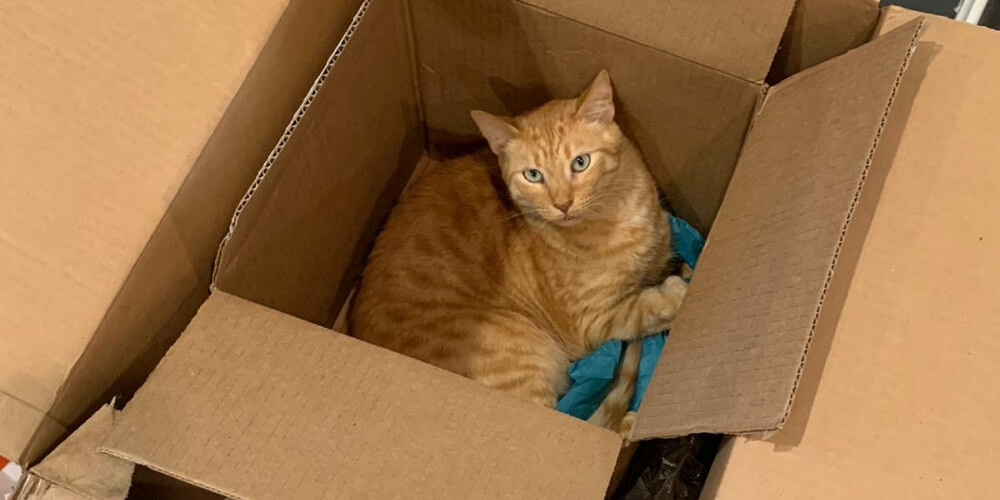
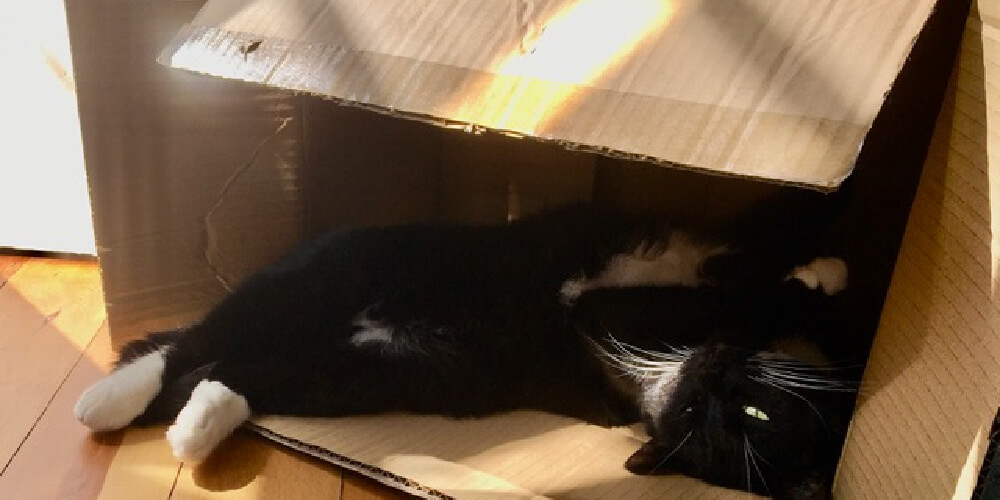
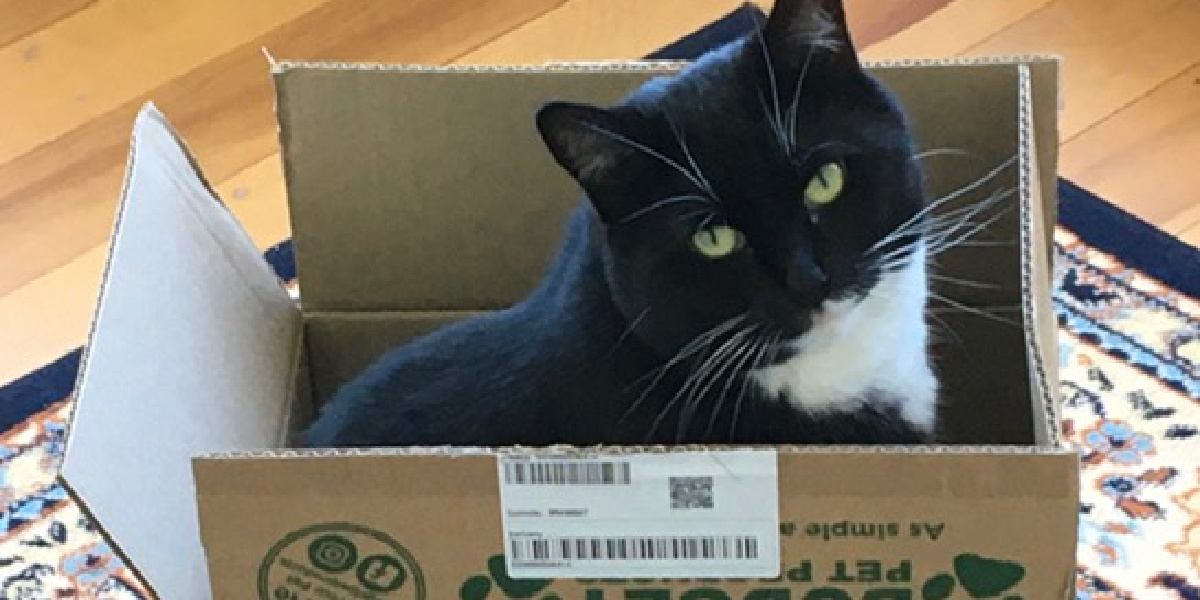

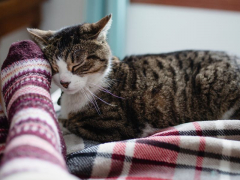
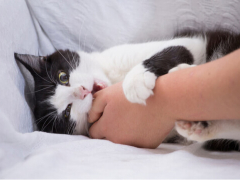

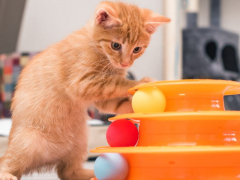


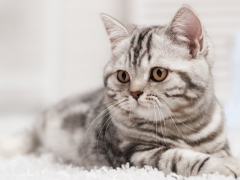
If only humans could be so easily pleased!
I must have one of the only cats in the world who doesn’t care for boxes. I adopted Luna just about 3 years ago as a 5-year old. I noticed pretty quickly that she didn’t seem to care for enclosed spaces — bags and boxes held no interest for her. I have a lot of packages coming to the house, and I always leave the boxes out for her to investigate — she’ll give them a quick visit, and then they’re ignored, and I end up putting them out to be recycled pretty quickly.
She has a cave-style bed, and her cat tree has a “condo” box that she can also go into. Both beds do get used, but very infrequently, and only for short periods. She also has an open bed, but she prefers to sleep on my bed on a body pillow, on the back of the couch, or on a large round ottoman that I have in the living room. To each their own, I guess!